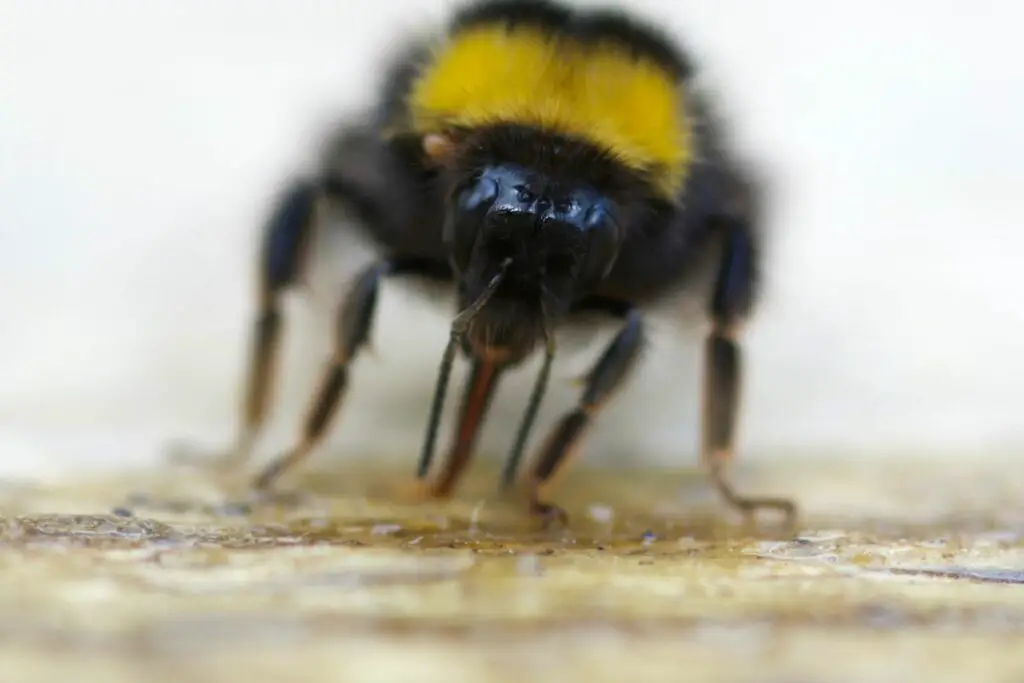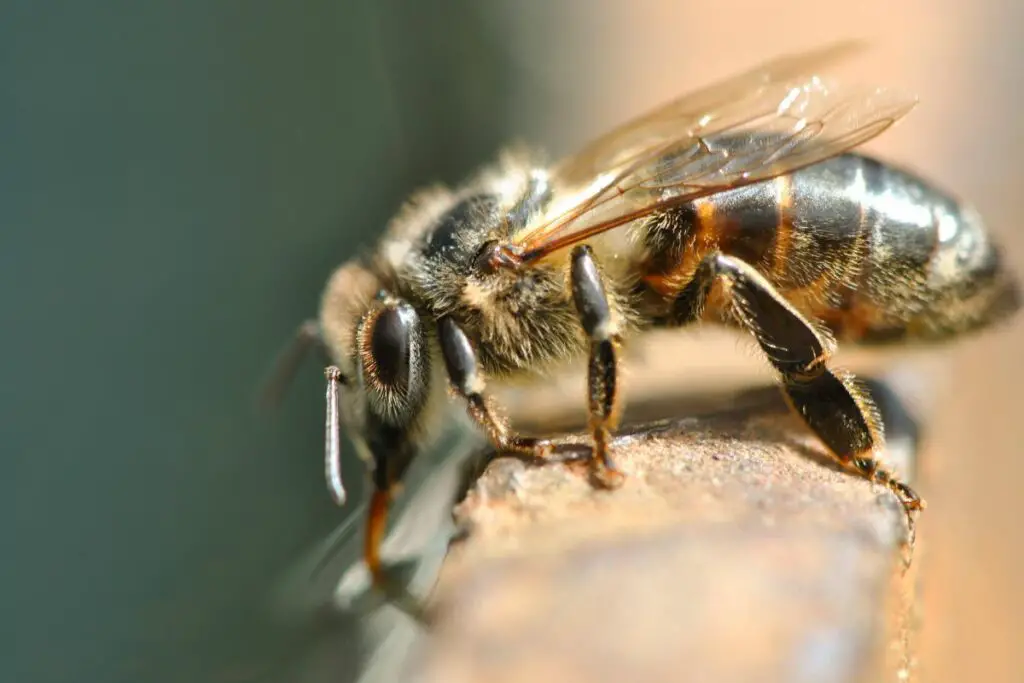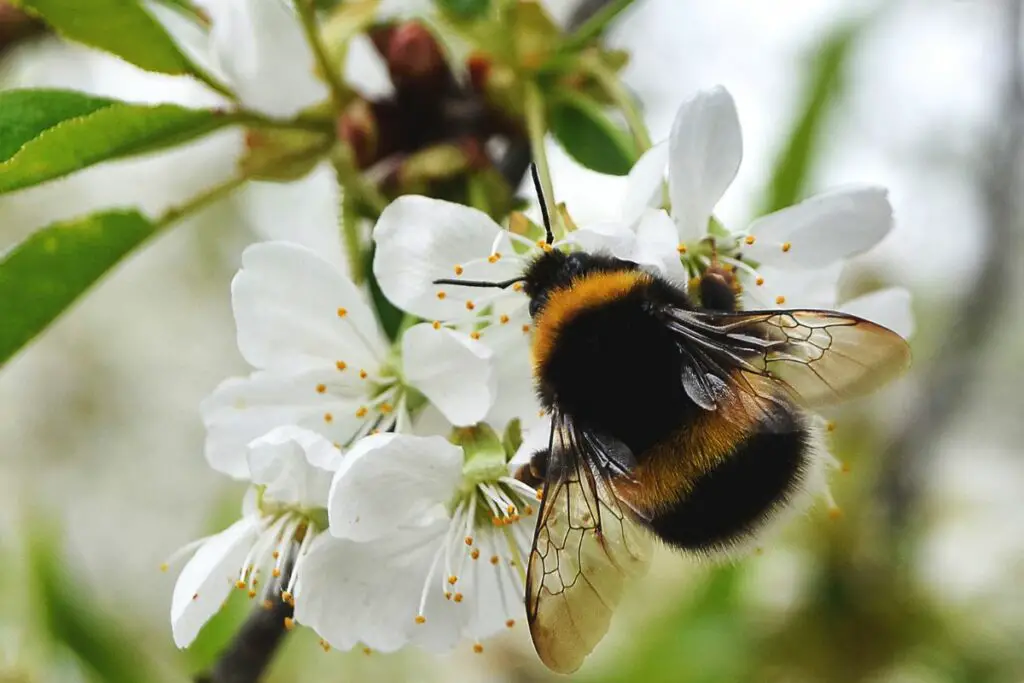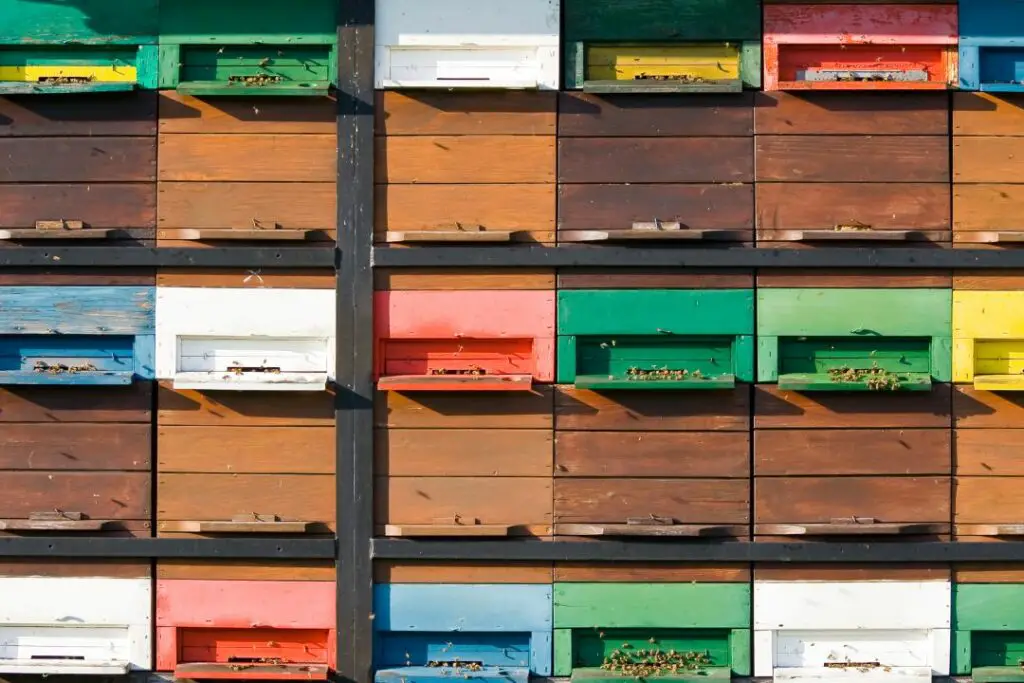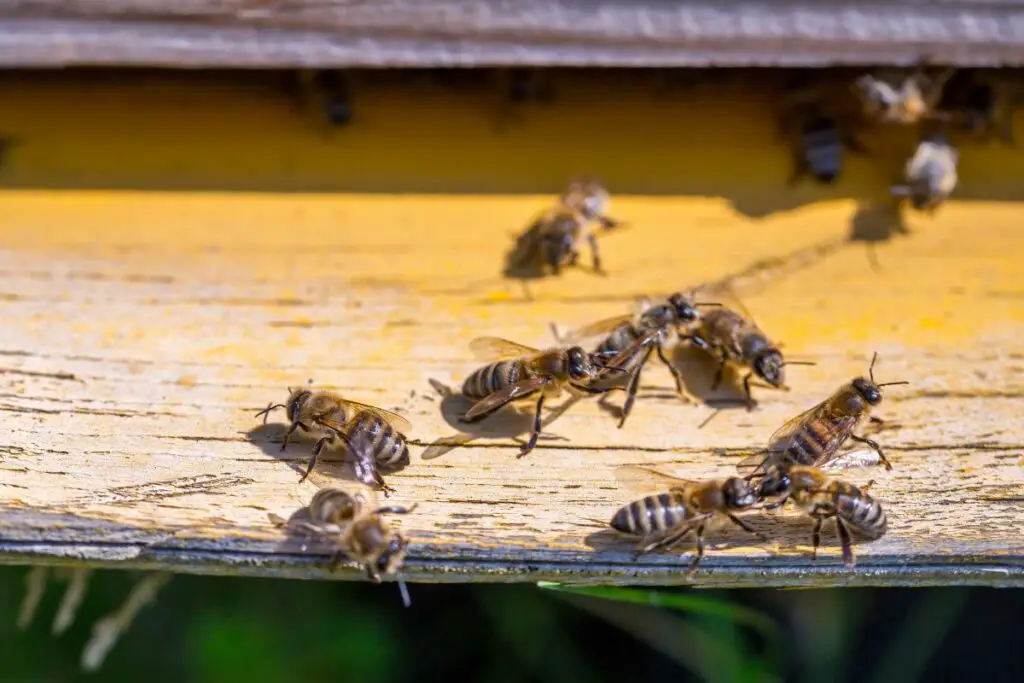Bees drink water using their proboscis. The same long straw-like appendage they use to suck up nectar from flowers.
Honey bees, bumble bees, and solitary bees need water to stay hydrated.
So where do bees find water, and why do they prefer ‘dirty water’?
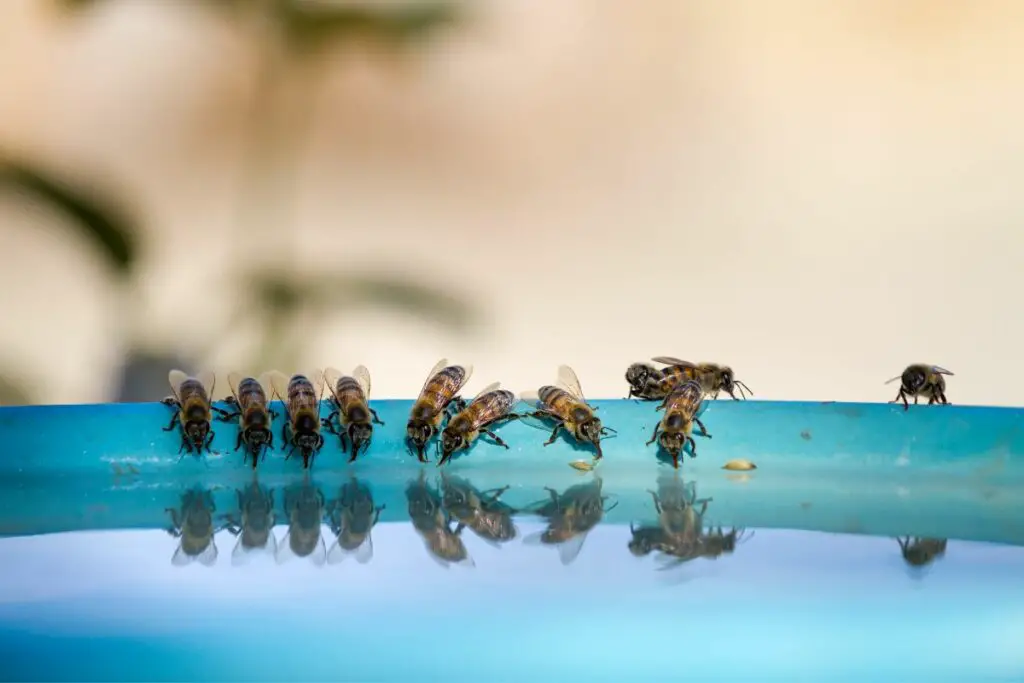
Finding A Water Source
Bees can find water in the most amazing of places.
Some common water foraging locations include:
- Natural Water Bodies: Bees often frequent rivers, lakes, and ponds to collect water.
- Dew on Plants: Early in the morning, bees can be seen sipping dew directly from leaves and grass.
- Bird Baths: These are popular man-made sources, especially if they are shallow or have pebbles for bees to land on.
- Dripping Taps or Leaky Faucets: Bees use these consistent drips as a reliable water source.
- Wet Soil or Mud Puddles: Bees sometimes visit these areas, especially in drier climates where water is scarce.
- Garden Features: Water fountains, sprinklers, drip irrigation systems, and swimming pools.
- Rainwater Collection Systems: Barrels or buckets that accumulate water over time.
- Potted Plant Saucers: Hold excess water from watering plants.
But it turns out that bees can get pretty resourceful in their hunt for water.
Some species of solitary bees opt to get their hydration from the tears and sweat of mammals.
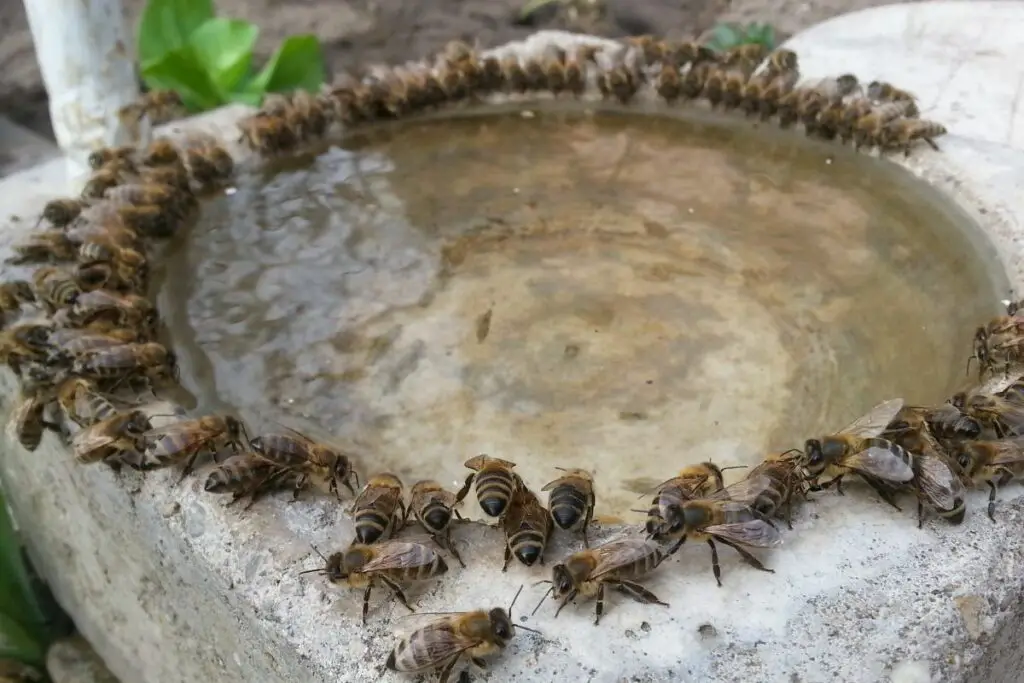
Why Do Bees Drink Dirty Water?
“Dirty water” for bees refers to water containing additional nutrients and minerals, often found in puddles, ponds, or near decomposing organic material.
Bees are drawn to dirty water for the vital minerals and salts it contains.
These nutrients, often lacking in pure water, are essential for their health and the development of bees and their larvae.
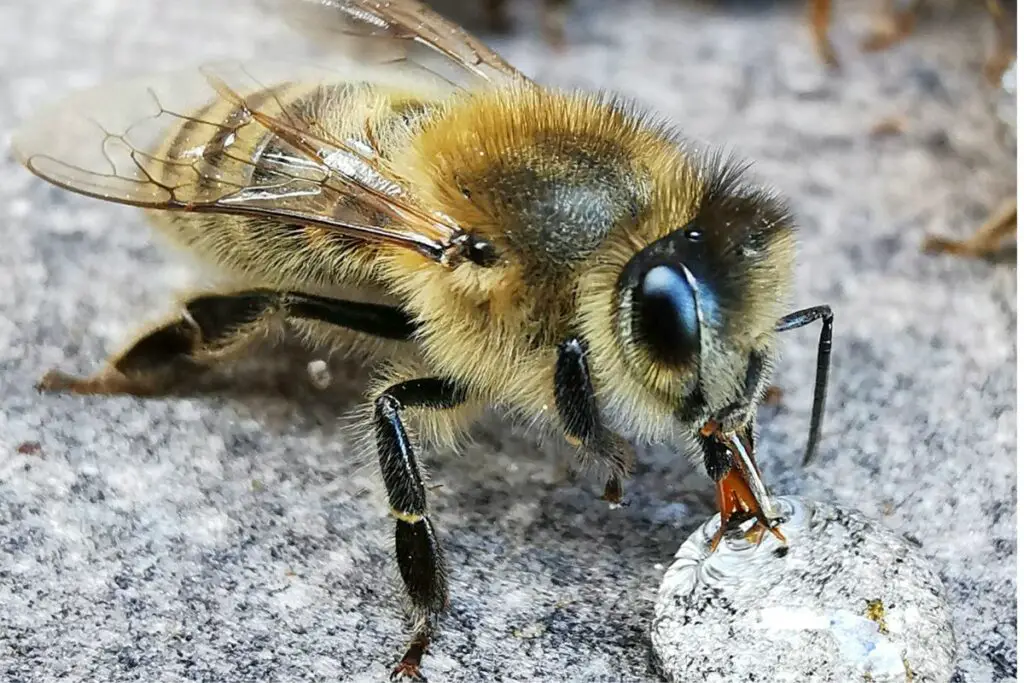
How You Can Help
Drinking water is essential for bees, but that doesn’t mean it doesn’t have its own set of dangers.
First, many bee predators wait in the undergrowth for their next meal.
Next, the actual act of drinking is more dangerous than we even know.
Bees aren’t good swimmers. Their furry bodies and delicate wings do not mix well with water.
But you can help in your garden with a few simple steps.
*Extra reading – Find out more about bees and water in our short read, can bees swim?
Creating a bee drinking station
All you need to do to create your bee drinking spot is add some helpful islands to let bees drink safely.
The easiest way to do this is by adding some pebbles or bits of wood to a receptacle that already collects dirty water that bees love.
Bird baths and potted plant saucers are perfect fro this because they’re relatively shallow.
Below two honey bees take full advantage of this island to slurp up precious liquids.
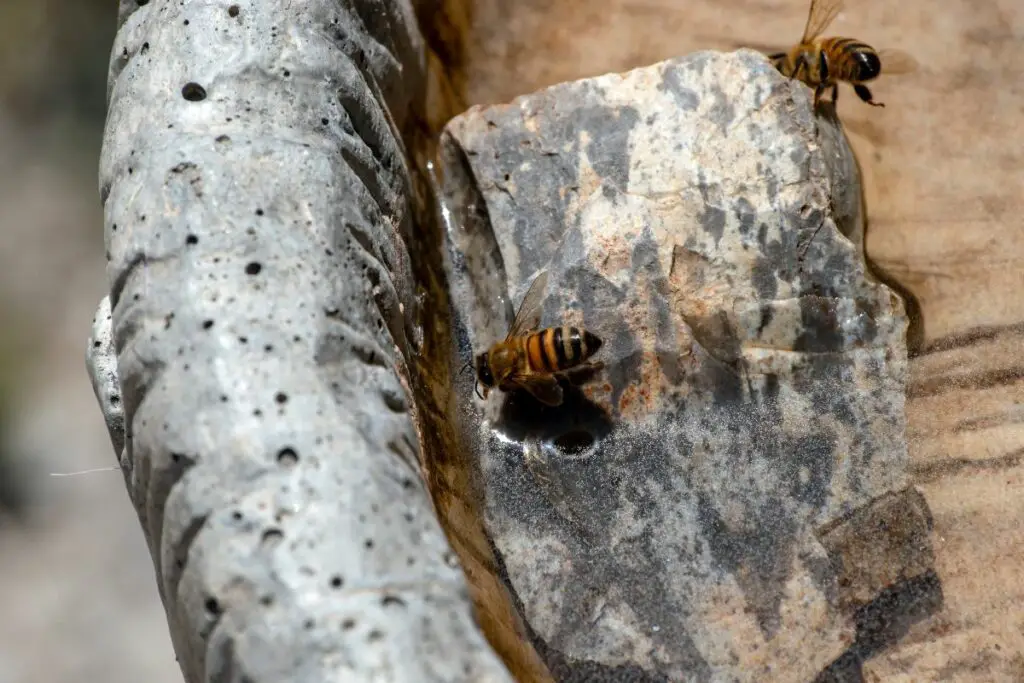
Other Uses For Water
Bee’s applications for water don’t stop at just drinking. It helps with moderating temperatures and feeding young.
Cooling the nest or hive
Honey bee colonies have developed a clever strategy for cooling the hive on hot summer days.
Worker bees will leave to collect water from nearby sources.
They use a receptacle in their body called a crop or honey stomach to store the water (no prizes for guessing what else they store here).
Diluting honey stores
Bees ingeniously use water to adjust the consistency of honey within their hives.
When honey becomes too thick or crystallized, they add water to dilute it, ensuring it remains at an ideal, manageable consistency for feeding and nurturing their young.
